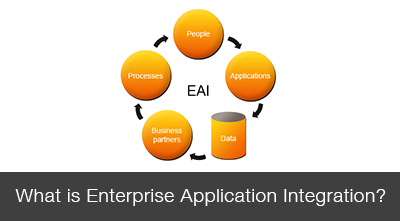What is Enterprise Application Integration (EAI)?
Enterprise Application Integration (EAI) is the use of services and technologies over an enterprise to start the alliance of hardware systems and software applications.

Enterprise Application Integration (EAI) is a term applied to the process of using all of the services and technologies within an enterprise to integrate hardware and software. It’s a solution that fosters communication between different enterprise applications, such as CRM and supply chain management, allowing important data to be shared and accessed by users of different applications.
Why Does Enterprise Application Integration Matter?
Enterprise-level businesses use a wide range of applications. The organization might have one application that handles customer relationship management. Another application would handle supply chain management. Yet another would handle inventory control, and so on. While each of these applications is good individually, they are not interconnected with one another.
Running a large organization is often difficult on a day to day basis. Breaking up responsibilities into smaller chunks, or modules often has benefits. For instance, it enables the creation of teams or departments with specific responsibilities. This allows executives and decision-makers to focus on growth and stability, rather than the daily minutiae that would otherwise eat up their time. However, the problem is that modularization often results in the creation of information cul-de-sacs.
This means that important information is not shared across an organization. Rather, it is pigeonholed – it’s kept within a small area and accessible only by a select number of individuals, even if others within the organization would benefit to access to that information. Enterprise application integration is a comprehensive solution to solve this issue and ensure better sharing of vital data across an organization’s applications.
Difference between EAI and Point-to-Point Integration:
In a way, enterprise application integration can be thought of as “middleware.” It exists between other applications and gives connectivity and better communication. Note that this is offbeat from point to point integration, which is how these problems were addressed before the rise of enterprise application integration. Point to point integration only connects applications in pairs, whereas Enterprise application integration is capable of connecting multiple applications in many ways to suit the requirements of the organization.
Benefits of Application Integration
There are many advantages offered by enterprise application integration like -
- Multiple application processes can be automated, reserving IT, and other business labour resources for strategic activities rather than routine maintenance tasks.
- For example, users across the organization can access data in real-time.
- Interrelated applications can be renewed during the integration phase to be scalable and well-built, so they do not form bottlenecks when rapid expansion in workload aptitude is required.
- One can utilize the CRM client data to start an email marketing campaign and generate reports to evaluate its efficiency.
- The integration of software enables businesses to generate IT facilities quickly and respond timely to the increasing demands of the customer.
- EAI helps in lessening the communication hurdles and streamlines the business processes by allowing access of information over varied applications into an easy-to-use interface.
Barriers to Application Integration
Integration usually gets undermined because of other preferences. It is when businesses face challenges that are difficult to deal with; then, they understand that employing enterprise application software is exceptionally vital. Many barriers can linger the progress of your organization in the nonexistence of EAI. You may risk dropping out to your competitors who have integration in their preference list.
It is advisable to work with a Digital Transformation partner to get your desired results at a low cost. There, one will be able to set the requirements of developing and maintaining, and everything can be prioritized.
Conclusion
Enterprise application integration is capable of connecting multiple applications in any number of ways to suit the needs of the organization in question.
While enterprise application integration is a complex combination of processes and techniques, there is no denying the importance of this approach, or the value that it can deliver to enterprise-level organizations. With the ever-increasing need for access to data and the growing number of uses for information, inter-application communication is a vital consideration for all organizations.